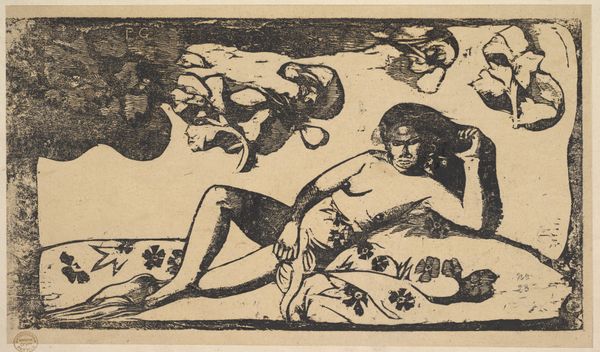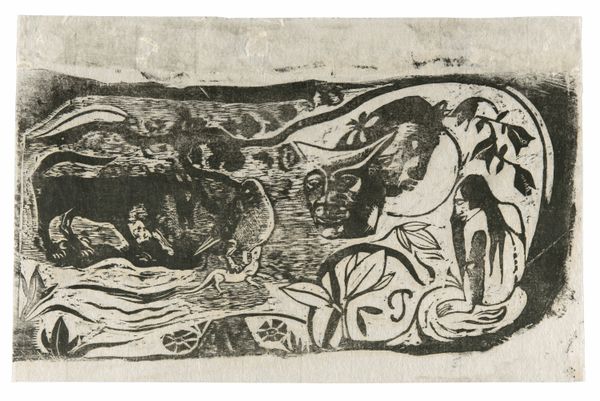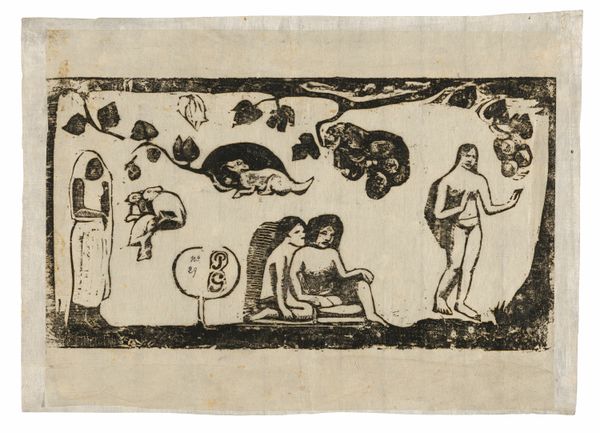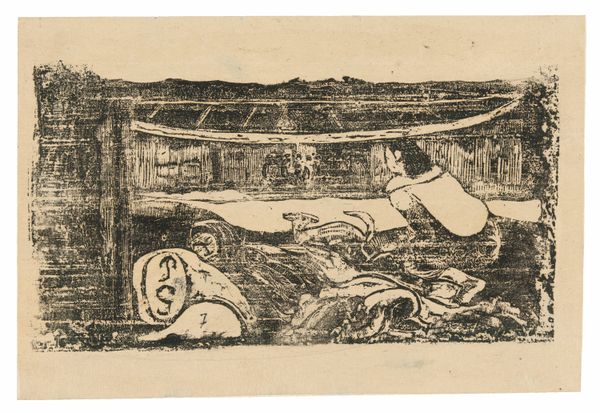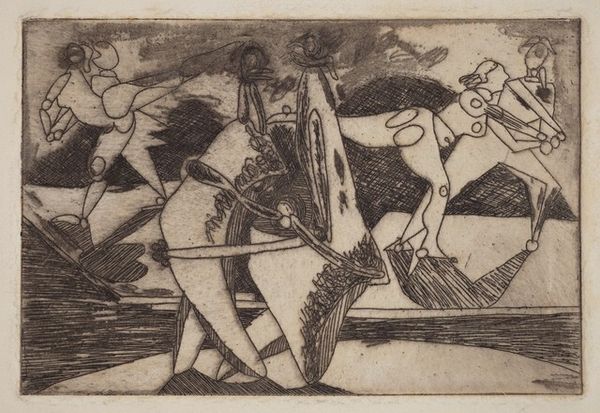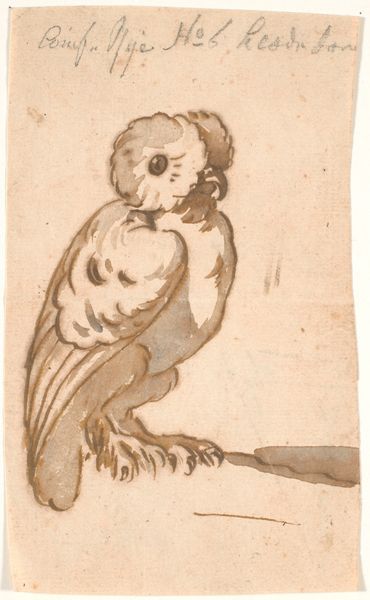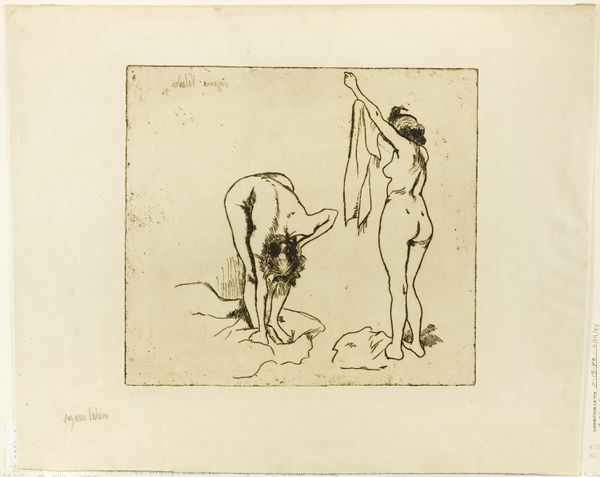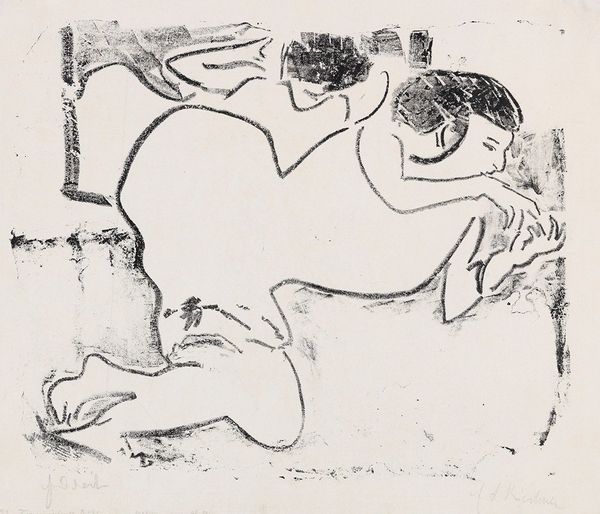
Te arii vahine—opoi (Woman with Mangos—Tired), from the Suite of Late Wood-Block Prints 1898 - 1899
0:00
0:00
drawing, print, paper, woodcut
#
drawing
#
ink drawing
# print
#
landscape
#
figuration
#
paper
#
woodcut
#
symbolism
#
post-impressionism
#
nude
Dimensions: 165 × 305 mm (image); 171 × 305 mm (image with printed edge of block, lower left); 228 × 305 mm (primary/secondary support)
Copyright: Public Domain
Curator: As we consider this print now on display at The Art Institute of Chicago, titled "Te arii vahine\u2014opoi (Woman with Mangos\u2014Tired)" it is good to recognize it's by Paul Gauguin and was created sometime between 1898 and 1899. Editor: My first impression is one of melancholy, even weariness. The starkness of the black and white, the figure reclining with that heavy, almost burdened look on her face... it speaks of something deeper than simple repose. Curator: Indeed. Gauguin produced this woodcut during his second stay in Tahiti, part of a larger suite of prints exploring Tahitian themes. It’s important to remember that Gauguin’s vision of Tahiti was very much a construct, influenced by colonial narratives and his own romanticism, which had major social impacts, many quite damaging. Editor: And the symbols he uses contribute to this constructed narrative. The mangoes, for example, could represent fertility and abundance, traditional associations. But in the context of the woman’s tired posture, perhaps they hint at the burdens of those traditional roles. It's a powerful juxtaposition. What’s intriguing is the figure is “crowned” by botanical shapes surrounding her head. Are these laurel leaves – signifying artistic genius? It's another odd addition when considering how world weary the model appears. Curator: The title itself, "Tired," is significant. We have to think about how Gauguin perceived his models, the female figures he encountered. Were they exotic beings free from Western constraints, or were they, in his view, perhaps "tired" of colonial influence? We must realize how this lens, the politics of representation, shifts our perception. And his woodblock technique adds a raw intensity that painting simply can't achieve. Editor: That rawness emphasizes the primitive exoticism he was aiming for, doesn't it? There’s a flattening of form, a simplification, which reduces the subject to a basic idea of itself. The image speaks about so much, and through our 21st century sensibilities reveals uncomfortable aspects that deserve discussion and greater awareness. Curator: Indeed. This image, like many others from that period, operates on many levels, and that tension between visual pleasure, colonial implications, and the burden of cultural assumptions that still provoke very lively critical discussion. Editor: It is those tensions, ultimately, that make works such as this stay with us and give it cultural relevance today.
Comments
No comments
Be the first to comment and join the conversation on the ultimate creative platform.

